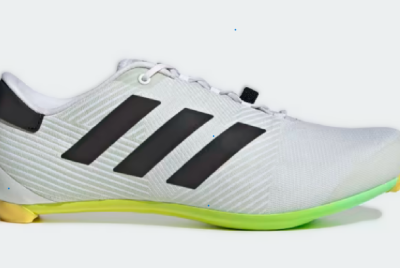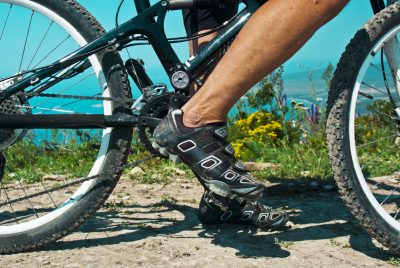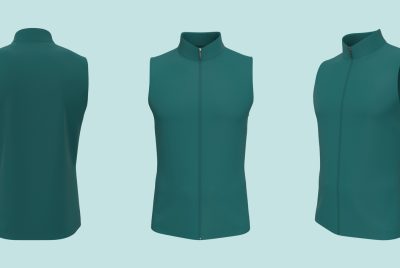Bicycle Cadence Sensor for Galaxy Watch
As a cycling enthusiast, I understand the significance of tracking metrics during a ride. One key metric that can greatly enhance your cycling experience is cadence. In this article, I’ll delve into the world of bicycle cadence sensors, focusing on their integration with the Galaxy Watch. From choosing the right sensor to maximizing its benefits, let’s pedal through the details.
Introduction to Bicycle Cadence Sensors
Definition and Importance of Cadence
Cadence refers to the number of pedal revolutions per minute (RPM) while cycling. It’s a crucial metric that impacts your efficiency and performance on the bike. Monitoring cadence helps you find your optimal rhythm, preventing overexertion and maximizing power output.
Benefits of Monitoring Cadence
Maintaining an appropriate cadence allows you to distribute effort evenly, reducing strain on your muscles and joints. This leads to improved endurance and reduced risk of injuries. Moreover, it helps in adapting to various terrains and elevations.
Introducing the Galaxy Watch for Cycling Enthusiasts
Features and Capabilities
The Galaxy Watch is more than just a smartwatch; it’s a powerful fitness companion. With GPS tracking, heart rate monitoring, and a host of other features, it’s tailored for active individuals, especially cyclists.
Compatibility with Bicycle Cadence Sensors
One of the standout features of the Galaxy Watch is its compatibility with various fitness accessories, including cadence sensors. This integration allows for real-time tracking and seamless data analysis.
Choosing the Right Cadence Sensor
Types of Cadence Sensors
When it comes to cadence sensors, you have options. There are magnet-based sensors that attach to your bike’s crank arm, as well as newer, magnet-free options that use accelerometers to detect pedal motion. Consider your preferences and bike compatibility when making your choice.
Compatibility with Galaxy Watch
Ensure that the cadence sensor you select is compatible with the Galaxy Watch. Most modern sensors use Bluetooth technology for connectivity, which makes them easily pairable with the watch. Double-check compatibility specifications before making a purchase.
Budget Considerations
Cadence sensors come in a range of prices. While it’s tempting to go for the top-of-the-line model, consider your budget and needs. Even mid-range sensors can provide accurate data for most cyclists.
Installation and Setup Process
Step-by-Step Guide
Installing a cadence sensor is typically straightforward. It involves securely attaching the sensor to your bike and syncing it with your Galaxy Watch. Follow the manufacturer’s instructions carefully to ensure proper setup.
Troubleshooting Tips
If you encounter any connectivity issues or erratic readings, don’t be discouraged. Troubleshooting is part of the process. Check for interference from other devices, ensure proper alignment of the sensor, and consult online forums or customer support for guidance.
Real-time Cadence Monitoring with Galaxy Watch
Display and Interface
The Galaxy Watch provides an intuitive interface for viewing real-time cadence data. You can customize your display to prioritize cadence, allowing you to monitor it at a glance while riding.
Data Interpretation and Analysis
Understanding your cadence data is key to optimizing your performance. Pay attention to how your cadence correlates with your speed and heart rate. Experiment with different cadence ranges to find what works best for you.
Improving Performance through Cadence Management
Optimal Cadence Range for Different Terrains
The ideal cadence can vary depending on factors like terrain and riding style. Generally, a cadence of 70-90 RPM is a good starting point. Experiment with higher cadences for flats and lower cadences for climbs to find your sweet spot.
Training Tips and Techniques
Use your cadence data to inform your training regimen. Incorporate interval sessions to work on cadence variations and build strength. Focus on maintaining a consistent cadence to improve your endurance over long rides.
Syncing Data and Tracking Progress
Integration with Fitness Apps
The Galaxy Watch seamlessly syncs your cadence data with popular fitness apps. This allows you to analyze your rides in greater detail and track your progress over time. Take advantage of features like GPS mapping and heart rate zone analysis.
Long-term Benefits of Monitoring Cadence
Consistent cadence monitoring leads to long-term improvements in your cycling performance. You’ll become more attuned to your body’s rhythms and be able to sustain effort over extended periods. This translates to faster, more enjoyable rides.
Addressing Common Concerns and Misconceptions for Bicycle Cadence Sensor for Galaxy Watch
Battery Life of Cadence Sensors
One common concern is the battery life of cadence sensors. Most sensors have long-lasting batteries that can go for months before needing replacement or recharging. However, it’s a good practice to periodically check the battery status to avoid any disruptions during your rides.
Compatibility Issues with Other Devices
While the Galaxy Watch is known for its wide compatibility, it’s important to ensure that all your devices work harmoniously. If you experience any issues, such as connectivity problems or data syncing delays, consult the user manuals or online forums for troubleshooting tips.
Tips for Extending the Lifespan of Your Cadence Sensor
Maintenance and Care Guidelines
Proper maintenance can significantly extend the lifespan of your cadence sensor. Regularly clean it to remove dirt and debris that may affect its performance. Inspect the sensor for any signs of wear and tear, and replace any worn-out parts promptly.
Storage Recommendations
When not in use, store your cadence sensor in a cool, dry place away from direct sunlight and moisture. This helps prevent any potential damage to the sensor’s components.
Comparing Different Cadence Sensor Models
Reviews and Recommendations
Reading user reviews and seeking recommendations from fellow cyclists can provide valuable insights into the performance and durability of different cadence sensor models. Look for sensors that have received positive feedback for accuracy and reliability.
User Experiences
Consider the experiences of other cyclists who have used the same sensor. They can offer valuable tips and insights on how to get the most out of your cadence sensor.
Safety Considerations for Using Bicycle Cadence Sensor for Galaxy Watch
Focus on Road Awareness
While cadence monitoring is a valuable tool, it should not divert your attention from the road. Always prioritize safety and be aware of your surroundings, especially when cycling in traffic.
Balancing Cadence with Other Metrics
Remember that cadence is just one of many metrics to consider during your ride. Pay attention to your heart rate, speed, and overall comfort on the bike. Finding the right balance between these factors will lead to a more enjoyable and effective cycling experience.
The Future of Cadence Sensors and Wearable Technology
As technology continues to advance, we can expect even more sophisticated cadence sensors and wearable devices tailored for cyclists. Innovations may include enhanced battery life, more accurate sensors, and seamless integration with a wider range of devices. Additionally, advancements in data analysis and artificial intelligence could provide cyclists with even deeper insights into their performance.
User Testimonials and Success Stories
Insights from Cyclists Who Have Benefitted
Real-life experiences can be incredibly insightful. Hearing from fellow cyclists who have integrated cadence sensors into their rides can offer valuable perspectives. Look for testimonials and success stories online to gain a better understanding of how cadence monitoring has positively impacted others.
Motivational Anecdotes
Some cyclists may share anecdotes about how monitoring cadence transformed their training routines and led to significant performance improvements. These stories can serve as motivation for individuals looking to enhance their own cycling experiences.
Conclusion: Elevating Your Cycling Experience with a Bicycle Cadence Sensor for Galaxy Watch
Integrating a cadence sensor with your Galaxy Watch can revolutionize your cycling experience. By optimizing your pedaling rhythm, you’ll ride with greater efficiency, reduce the risk of injuries, and ultimately enjoy more fulfilling rides. Remember to select a sensor that suits your needs, and follow best practices for installation and maintenance. With the right tools and techniques, you’ll unlock a new level of cycling performance.
FAQs for Bicycle Cadence Sensor for Galaxy Watch
- What is the ideal cadence range for cycling?
The ideal cadence range typically falls between 70-90 RPM. However, individual preferences and terrain may influence your optimal cadence. - Can I use any cadence sensor with a Galaxy Watch?
Most modern cadence sensors that utilize Bluetooth technology should be compatible with a Galaxy Watch. However, it’s always recommended to double-check compatibility specifications. - How do I calibrate my cadence sensor?
Calibration processes may vary depending on the specific sensor model. Consult the manufacturer’s instructions for detailed steps on calibrating your cadence sensor. - Are there any privacy concerns with cadence monitoring?
Cadence monitoring primarily involves tracking mechanical movement. As such, it doesn’t typically raise privacy concerns. However, it’s always important to review and understand the privacy policies of any associated apps or platforms. - Can I use a cadence sensor with other fitness trackers?
Many cadence sensors are designed to be compatible with a variety of fitness trackers. However, it’s recommended to verify compatibility with specific models before making a purchase.
Incorporating a cadence sensor into your cycling routine can truly transform your performance and overall enjoyment on the bike. By choosing the right sensor, understanding how to interpret the data, and focusing on safety, you’ll be well on your way to reaching new cycling heights. Happy riding!
*We may earn a commission for purchases made using our links. Please see our disclosure to learn more.




